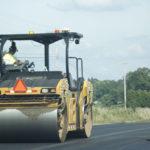NEW PALTZ – Hudson Valley Pattern
for Progress is going to develop an urban action agenda to identify areas
that can be developed and create connections with protected areas in the
region.
Officials of Pattern and the Regional Plan Association, based in Manhattan,
put their heads together on Wednesday to identify issues facing the Hudson
Valley.
Infrastructure, taxes, jobs, and housing were the main issues brought
up by the program presenters Ned Sullivan, president of Scenic Hudson;
Chris Jones, vice president for Research at RPA; Pattern President Jonathan
Drapkin and its March Gallagher; and facilitator Graham Trelstad.
Trestad leads the discussion
at SUNY New Paltz
There are 25 urban centers in the Hudson Valley, not only cities but
villages like Walden and Catskill. Catskill is not a city but it is the
urban center of Greene County, it was noted.
Setting goals for physical infrastructure as well as technological infrastructure
will be crucial to these areas, according to Gallagher.
Scenic Hudson pictures a Hudson Valley with vibrant cities and towns that
are attractive to young people, but also offering the best quality of
life for work force and retiring baby boomers.
“We envision our cities and towns as great points of departure and,
using public transport, for getting to the beautiful preserved open spaces,
like the Shawangunks,” Sullivan said.
There are threats seen in oil pipelines and power lines that are proposed
to go through the areas, Sullivan said, as well as under investment in
infrastructure.
These are some of the reasons that Pattern is partnering with RPA.
“RPA’s goal is to knit the region together. It’s Pattern
on steroids,” Drapkin said. “If we work in nine counties,
they’re work three states.”
Jones explained that RPA conducted a survey and found that jobs, housing
and taxes where the most common concerns of people in the region.
The goals of a fourth RPA study are to make sure that communities are
resilient, that the economy grows in a sustainable and equitable way,
and looking at the best ways to implement the plan.
The assembled representatives of towns, counties and other stakeholders
discussed their concerns about the future of the region’s opportunities,
social equity, development, quality of life, land use and growth throughout
the Hudson Valley over the next three decades in order to help Pattern
and RPA better understand what is working well, and areas for growth.







